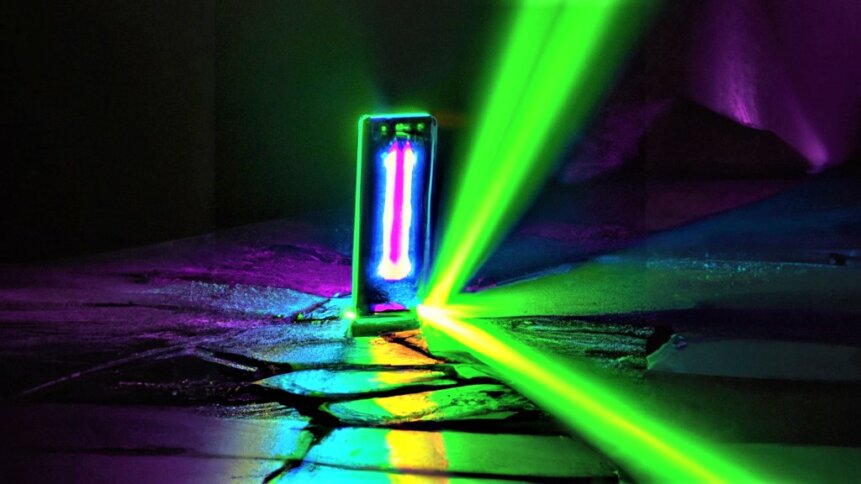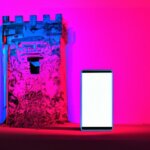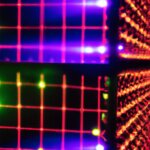QRNG chips for mobile – Danish tech start-up adds to ecosystem

|
Getting your Trinity Audio player ready...
|
• Handsets available today with QRNG chips for mobile
• Market includes IoT devices and other industrial products
• Photonic systems provide a compact source of entropy
Features to look out for when buying a mobile device include screen size, camera capabilities, and memory capacity. But security-savvy smartphone shoppers might want to dig deeper into the world of quantum random number generators (QRNGs) too. QRNG chips for mobile devices promise an upgrade in keeping smartphone communications safe from bad actors wanting to observe digital traffic on the line.
Random numbers are trickier to generate than many people would imagine. And it’s important to get the process right as these strings of bits – digital ones and zeros – are a vital ingredient in creating encryption keys. The majority of today’s smartphones, including Apple’s iPhone range, feature cryptographic pseudo-random number generators (CPRNGs), which have some theoretical shortcomings.
Taking Apple’s iPhone design as an example, the CPRNG gathers its entropy (or randomness) from a variety of sources – a hardware true random number generator (TRNG), as well as digital chatter between electronic components. These sources then provide a seed for generating values from the CPRNG. And the use of a seeded CPRNG is necessary to scale up the generation of random numbers to a bandwidth sufficient for high-speed processors.
The problem comes if an adversary can manipulate the CPRNG, as the system is deterministic. Given the same input, the CPRNG will produce the same output. And there are instances where device operations may be more predictable than others – for example, during start-up (a security issue dubbed ‘the cold start problem’) – which attackers will inevitably look to exploit.
Entropy pools that haven’t had enough time to gather sufficient randomness could lead to devices that share random numbers, which would weaken the cryptographic protection on offer. And it’s interesting to note that Apple Platform Security includes a seed file to ensure that entropy persists across boots.
QRNG chips for mobile devices
The ideal solution would be to use random numbers generated from a high-entropy source directly rather than as a seed. And there’s a growing ecosystem of hardware developers bringing commercial solutions to market featuring QRNG chips for mobile devices.
Progress in miniaturization and performance means that QRNG chips are both suitably sized for smartphones and have sufficient bandwidth to be used directly as a source of randomness. For example, Alea Quantum Technologies – which is commercializing technology originating from the Technical University of Denmark (DTU) – has demonstrators that support encryption of 4 gigabytes per second.
The setups exploit the quantum behavior of photons of light from a tiny laser to render random numbers at high speed, which are made available to processors using an analog to digital convertor and a field programable gate array. And the firm – founded in 2022 – is now engaged in bringing its design to market thanks to a DKK 7 million award from the EU’s Digital Europe Programme, which supports and accelerates digital transformation.
Alea Quantum Technologies sees financial services as one of the early beneficiaries of quantum key distribution enabled using QRNGs. And it’s worth adding that designs provide not just a high-bandwidth source of random numbers, but also have the potential to warn users of rogue behavior. “If someone tries to interfere (read) a quantum key it can actually be detected and a new key can be sent,” writes the firm on its website.
With smartphones being used increasingly for making payments and managing finances through banking apps, it’s no surprise to see device makers take a stronger interest in QRNG chips for mobile. In fact, there are already smartphones on the market that are pioneering the approach.
Samsung and SK Telecom teamed up in 2020 to launch a rebranded and updated Galaxy A71 5G device – dubbed the Galaxy A Quantum – which featured a QRNG chip produced by Swiss firm ID Quantique. And other custom editions have followed featuring QRNG chips for mobile. For example, a few months later, VinSmart announced the Aris 5G smartphone, and Samsung has continued to feature the technology – launching the Galaxy Quantum 2 in 2021 and, more recently, the Galaxy Quantum 3.
Tiny footprint
ID Quantique’s mobile QRNG chip has a tiny footprint (just 2.5 mm x 2.5 mm, according to the manufacturer) which shows just how compact systems can be. And clearly, Samsung must be impressed with the results and benefits to customers to continue to feature the circuity in its updated handsets.
“It protects the process from log-in / authentication / payment / unlock / OTP generation of services ranging from financial apps to social media and games, offering a much higher level of trust to the users,” explains ID Quantique, discussing the Samsung use case. “The QRNG is also used to encrypt data stored in the external memory card.”
Other developers include QUSIDE, who exhibited at this year’s Mobile World Congress in Barcelona. And it’s important to remember that the market for QRNG chips goes beyond mobile, extending into IoT devices and other communications architectures such as space technology.









